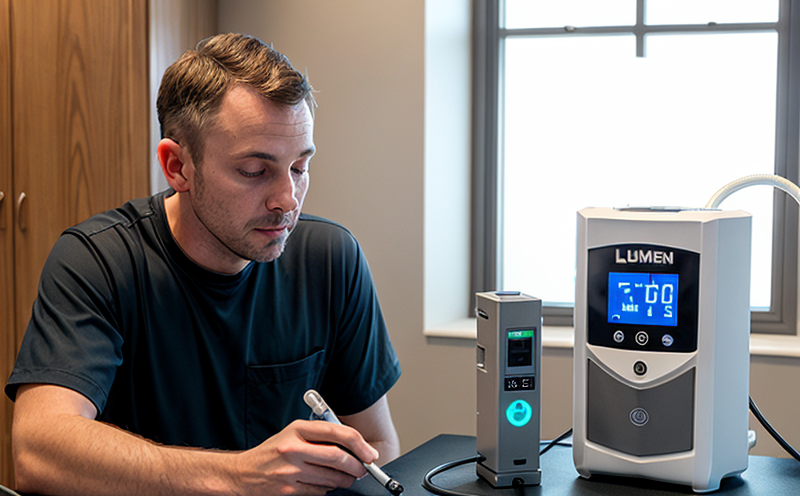IEC 60695 2 11 Glow Wire Lifetime Safety Testing of Luminaire Materials
The IEC 60695-2-11 standard is a critical part of the safety certification process for luminaires. This test evaluates the resistance to thermal runaway and self-heating phenomena, which can lead to fire hazards. The glow wire method involves subjecting luminaire materials to controlled heating by an electrically heated tungsten wire until it reaches a specific temperature. This process simulates real-world operating conditions that could potentially cause a material to ignite.
The test is particularly important for ensuring the safety of luminaires in various environments, including commercial and industrial spaces where electrical equipment is used extensively. Compliance with IEC 60695-2-11 helps manufacturers meet regulatory requirements and establish trust among customers regarding product safety. Here are some key aspects to consider:
- Material types: This test is applicable to a wide range of materials, including plastics, rubber, and other insulating substances used in luminaire construction.
- Test conditions: The glow wire temperature can be adjusted depending on the material being tested. Common temperatures include 500°C, 650°C, and 850°C, each designed to simulate different types of potential hazards.
- Specimen preparation: Samples are cut from luminaire components and prepared according to specific dimensions specified in the standard. Proper preparation ensures accurate test results.
The testing process is both rigorous and precise, involving multiple stages:
- Sample selection and preparation.
- Heating of the glow wire to a predetermined temperature.
- Oxidative exposure of the specimen material to the heated wire.
- Evaluation of any ignition or melting behavior.
The outcome provides crucial information about the thermal stability of materials used in luminaires, helping manufacturers make informed decisions regarding component selection and design optimization. This ensures that products not only meet but exceed safety standards, thereby enhancing overall product reliability and user confidence.
| Standard Number | Title |
|---|---|
| IEC 60695-2-11 | Glow-wire Ignition Test for Electrical Insulating Materials and Assemblies |
The test is widely recognized in the industry as a robust method to assess material safety. Compliance with this standard demonstrates a commitment to quality and safety, which is essential for brands seeking to establish a strong market presence.
Competitive Advantage and Market Impact
Compliance with IEC 60695-2-11 can provide significant competitive advantages in the lighting industry. It allows manufacturers to:
- Achieve faster time-to-market by meeting regulatory requirements more efficiently.
- Gain a reputation for product safety, which is critical for brand loyalty and customer trust.
- Differentiate products through superior quality assurance processes.
- Reduce liability risks associated with non-compliance or product recalls.
In today's highly competitive market, where consumer confidence in product safety is paramount, compliance with such standards can be a deciding factor between brands. It also opens doors to international markets where stringent safety regulations are enforced.
The impact on the market extends beyond individual companies; it contributes to broader industry standards and best practices. By adhering to these tests, manufacturers play a crucial role in ensuring that products meet global safety benchmarks. This not only protects end-users but also fosters innovation within the industry by encouraging safer design approaches.
Use Cases and Application Examples
The IEC 60695-2-11 test is applicable across various sectors, including:
- Commercial lighting fixtures.
- Industrial lamps.
- LED replacements for traditional bulbs.
- Outdoor luminaires and street lights.
Here are some practical use cases:
- Manufacturing quality control: Testing samples from production batches ensures consistent product quality. This helps identify any potential issues early in the manufacturing process, allowing for corrective actions to be taken promptly.
- New product development: Before launching a new luminaire design, manufacturers can use this test to evaluate different material options and their suitability under various operating conditions.
- Risk assessment: This test helps assess the risk of fire hazards associated with specific materials used in luminaires. It allows for informed decisions regarding material selection based on safety performance.
These applications highlight how IEC 60695-2-11 testing is integral to ensuring product safety and regulatory compliance across different lighting scenarios.





